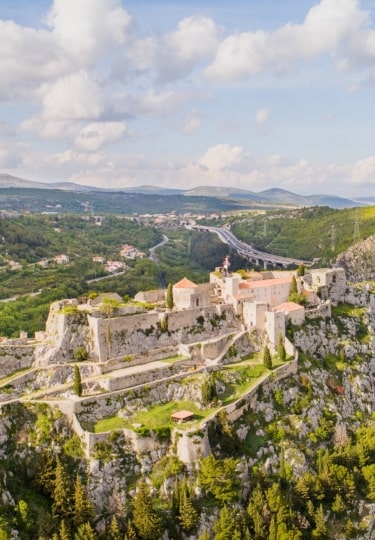Croatia’s second-largest city is a gem, glistening on the Adriatic Sea. Yet many of the best things to do in Split are inland from the waterfront, in the historic center’s storied streets.
The city’s importance in history is visible everywhere. As you stroll from polished squares to the archaeological museum’s Roman artifacts and the pedestrian-friendly Riva waterfront promenade, you’ll have a sense of stepping back in time.
Meanwhile, pebble and sand beaches lead the way into the turquoise-hued Dalmatian Coast, perfect for a refreshing post-sightseeing dip or as a backdrop for lunch accompanied by some of the country’s acclaimed wines.
Here are the top things to do in Split on your next visit.
Stroll Through the Old Town
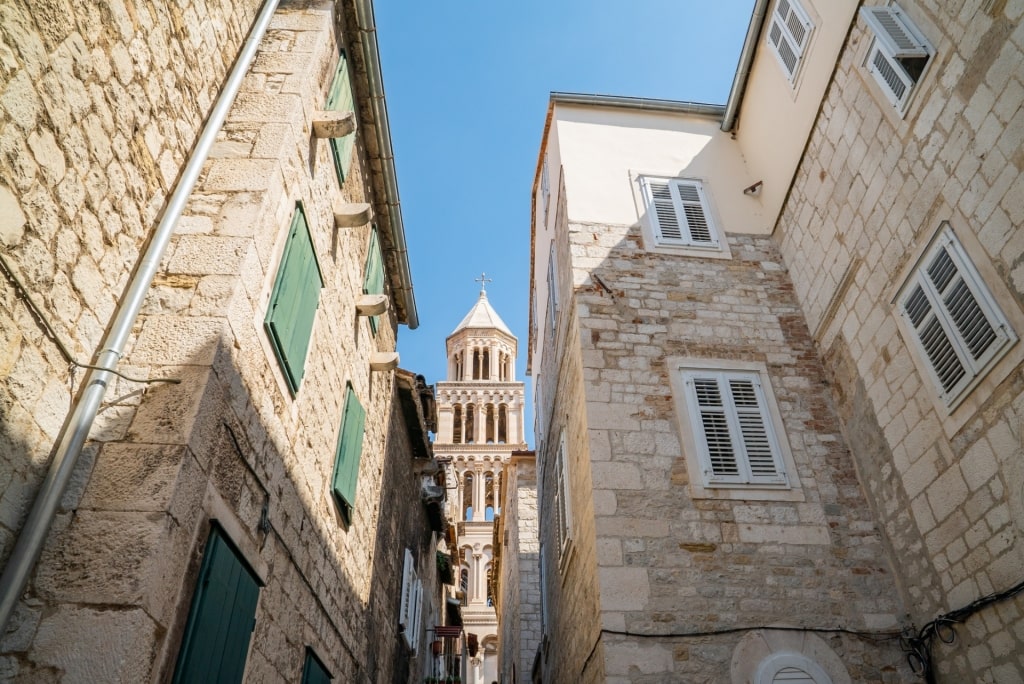
Old Town
Serving as the cultured heart of the city, Split’s Old Town is a warren of cobblestoned streets, cafe-lined squares, and many varied museums—all dominated by the Diocletian’s Palace, which forms the basis of much of the Old Town.
Entering through one of the historic doorways in the towering Roman walls (The Golden, Silver, Iron, or Brass Gates), you’ll find yourself stepping into a period of grandeur in the Roman empire.
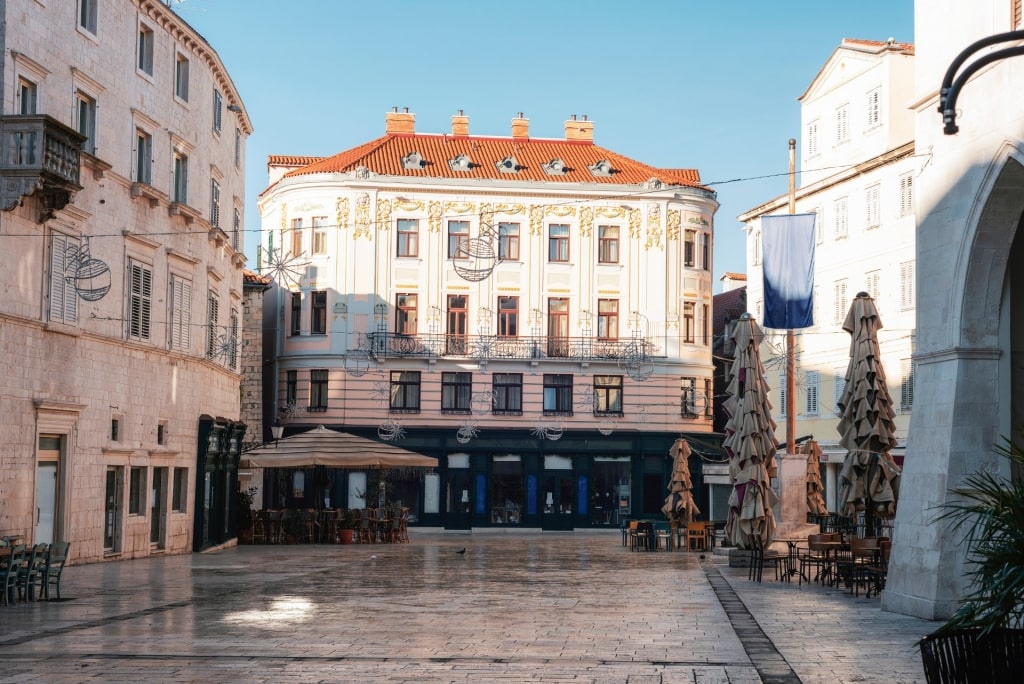
Pjaca Square
Pjaca Square (People’s Square) is a good starting point to orient yourself before entering the Old Town’s core. Settle in for a coffee at this elegant square, set against the ancient western wall, to see a side of the Old Town which wasn’t part of the sprawling palace.
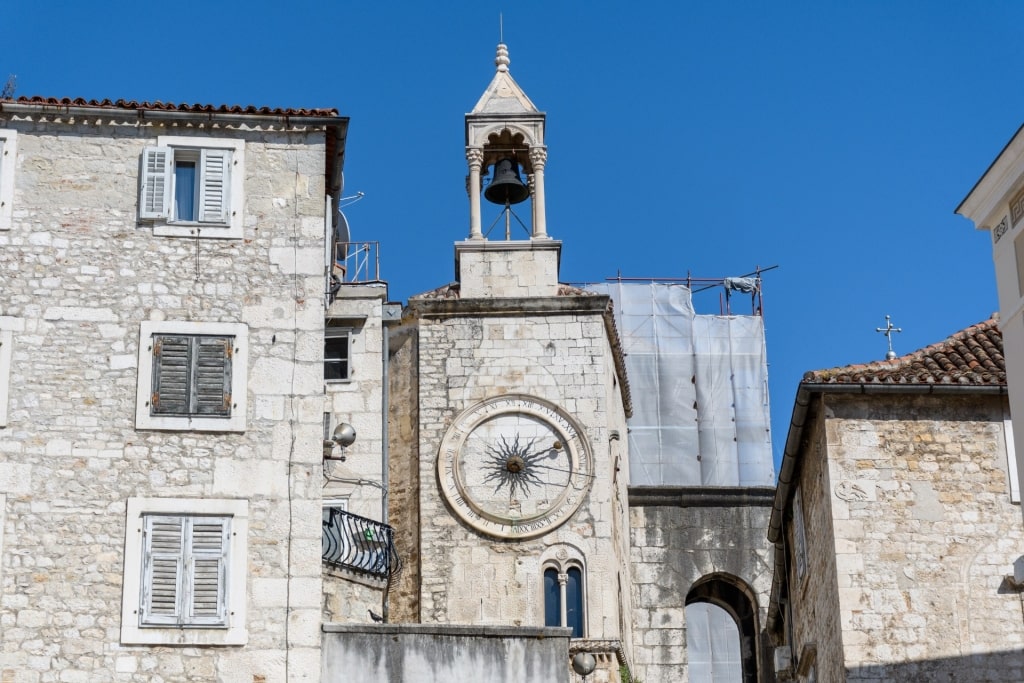
Pjaca Clock Tower
Surrounded by grand Gothic buildings and further palaces of noble families, the square mainly dates back to the 13th century. For one of the best views in the city, you can climb the 15th-century Pjaca Clock Tower, notable for the 24 digits on the timepiece.
You’ll also find a collection of fine museums among the narrow streets and impressive plazas. From the history-heavy Split City Museum, housed in part of the old palace, to the Galerija Emanuel Vidovic, celebrating the works of the renowned Croatian painter, there’s no shortage of culture to consume.
The piece de resistance of the Old Town, and indeed, the Diocletian’s Palace, can be found at Peristyle, once the inner courtyard of the palace. Now, the square is an open-air feast of polished Roman architecture and the gateway to many of the palace’s treasures.
Marvel at Diocletian’s Palace
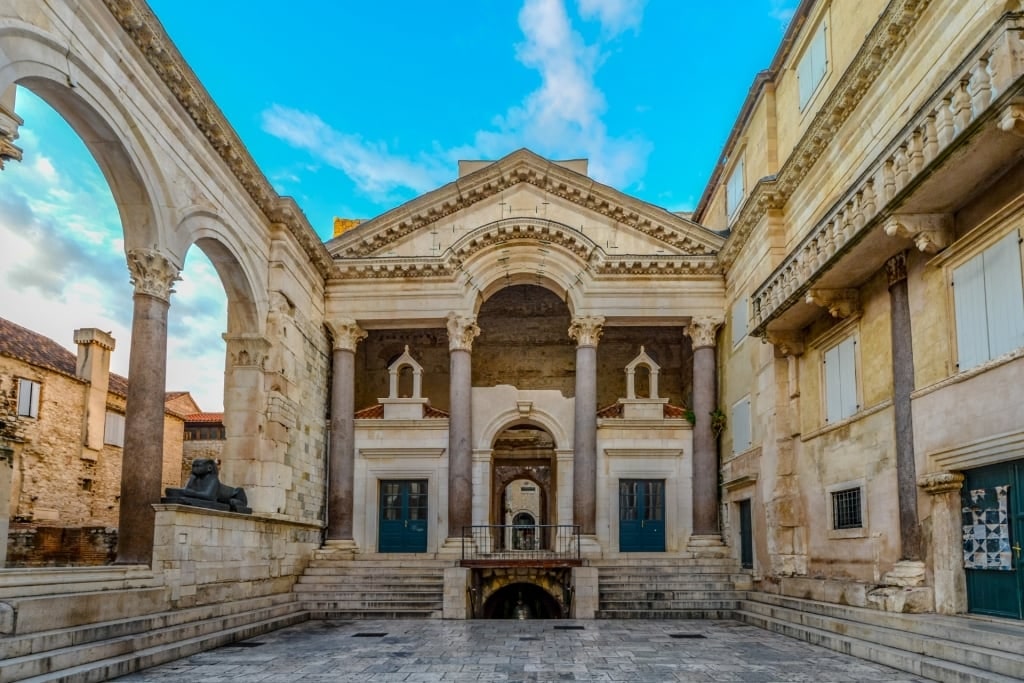
Diocletian’s Palace
No tour of Split’s Old Town is complete without exploring more of the Diocletian’s Palace, the impressive summer residence of the third-century Roman emperor and one of Croatia’s most beautiful places.
Constructed to be both a luxury villa for warmer-month retreats and a military camp, the vast and grand architectural gem is one of the country’s best-preserved Roman treasures and forms part of the World Heritage-listed Historical Complex of Split.
Diocletian’s Palace covers a considerable part of the city’s Old Town and walled area, and you’re often inside the complex without necessarily realizing it, as wandering the palace and cobbled streets of Split are one and the same.
The palace incorporates narrow streets, shops, and apartments, and some 3,000 people still live here today, but as ordinary Croatians rather than nobility.
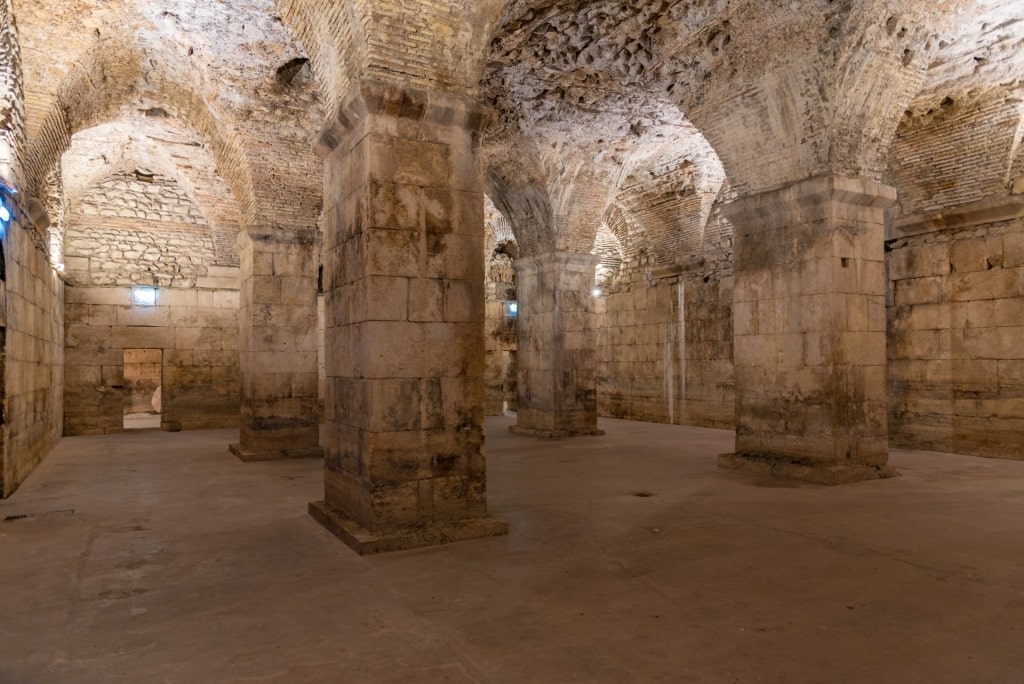
Diocletian’s Palace
Some parts of the palace require a ticket to enter, one being the excavated remains of the substructure.
Once, this underground web of vaulted halls and corridors was the entrance passageway from the sea to the palace, and the Romans used the old rooms for anything from storage and events to wine production.
While nowadays, the tunnel following this route is more about souvenir shops than seafaring journeys, venturing underground is undoubtedly one of the top things to do in Split to admire the well-preserved architectural treasures below.
Climb the Tower at the Cathedral of Saint Domnius
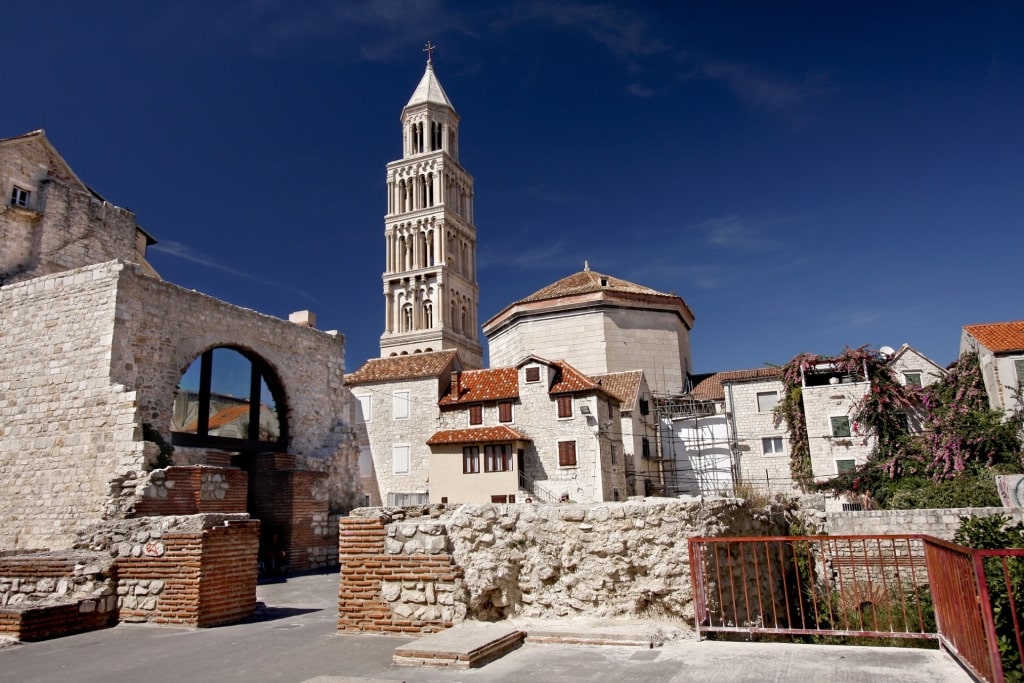
Cathedral of Saint Domnius
Part of Diocletian’s Palace, Split’s ancient octagonal cathedral serves both as a place of worship and also a mausoleum for Diocletian himself. After admiring the Colonnade’s columns outside, the 13th-century pulpit, altarpieces, and celebrated sculptured works inside await—an impressive medley of treasures befitting of an Emperor’s resting place.
The crypt below, now a small chapel, can be easily missed. The exterior door which provides access is worth hunting out to see the underground chamber and explore all of the cathedral’s secrets.
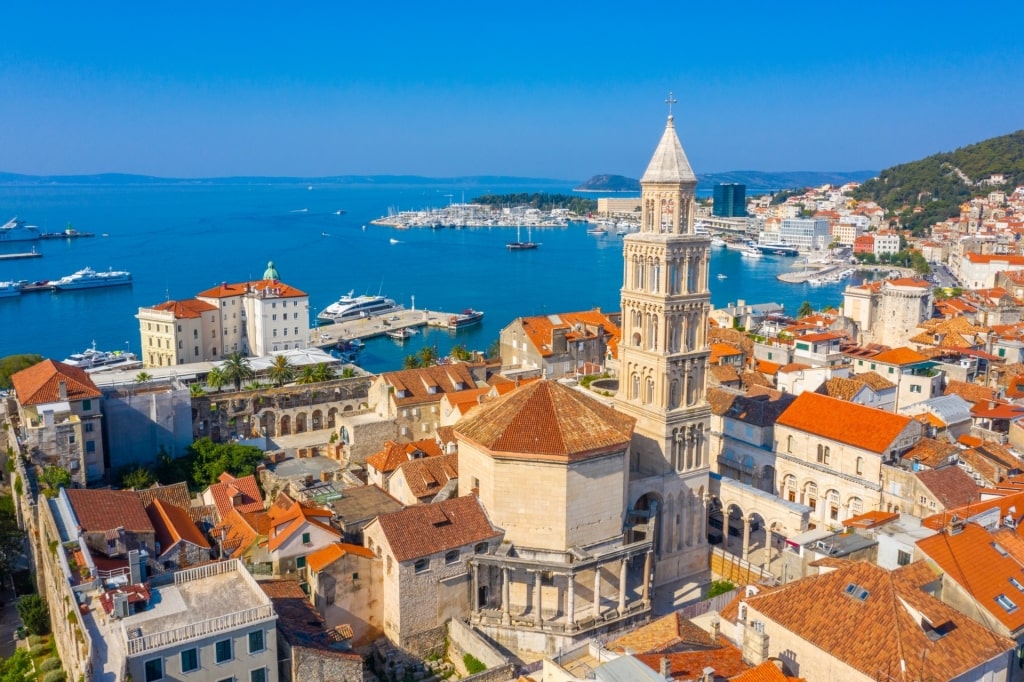
Cathedral of Saint Domnius
For one of the finest panoramas of Split, you can climb the medieval bell tower, now heavily reconstructed, connected to the cathedral, although the narrow stairs inside aren’t ideal for acrophobics.
After ascending over 150 feet to reach the viewing platform, the breathtaking views of the city’s ancient rooftops against the sparkling waters of the Adriatic spill out before you, ample reward for the leg workout.
Tour the Temple of Jupiter
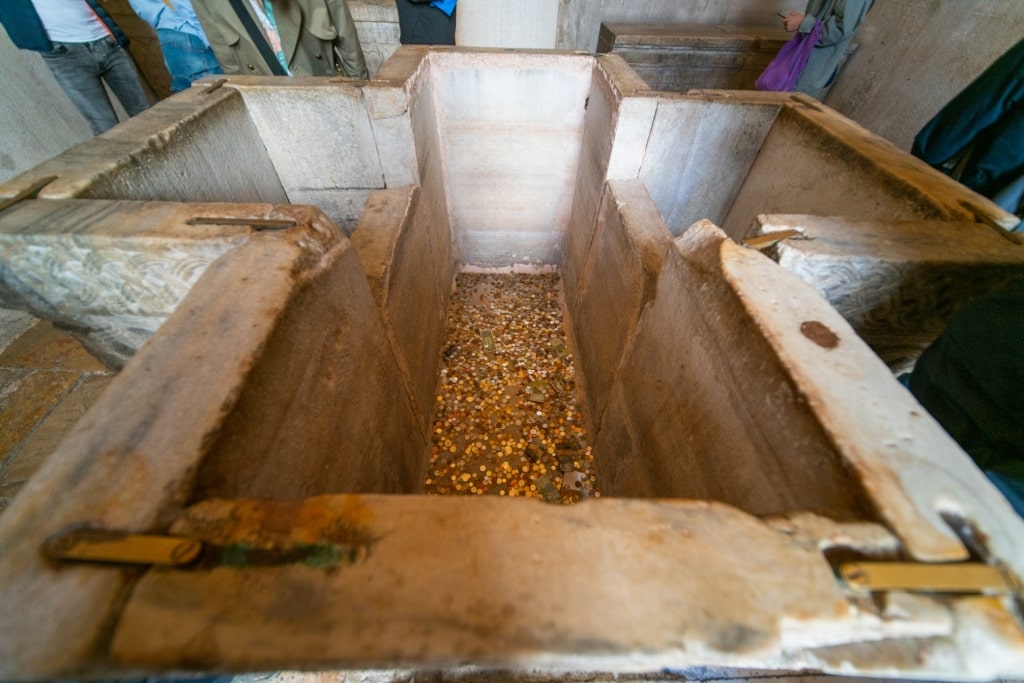
Temple of Jupiter
Also part of Diocletian’s Palace, the Roman Temple of Jupiter is one of the numerous things to do in Split’s Old Town. While the exterior and columned porch can be appreciated from the outside, entry into the interior of the temple, converted into a baptistery in the 6th century, is controlled.
Housed inside are medieval coffins of archbishops, a more modern but equally impressive bronze sculpture of St. John the Baptist (to whom the space is dedicated), and an arched ceiling adorned with some intricate stonework.
Soak up the Promenade’s Atmosphere
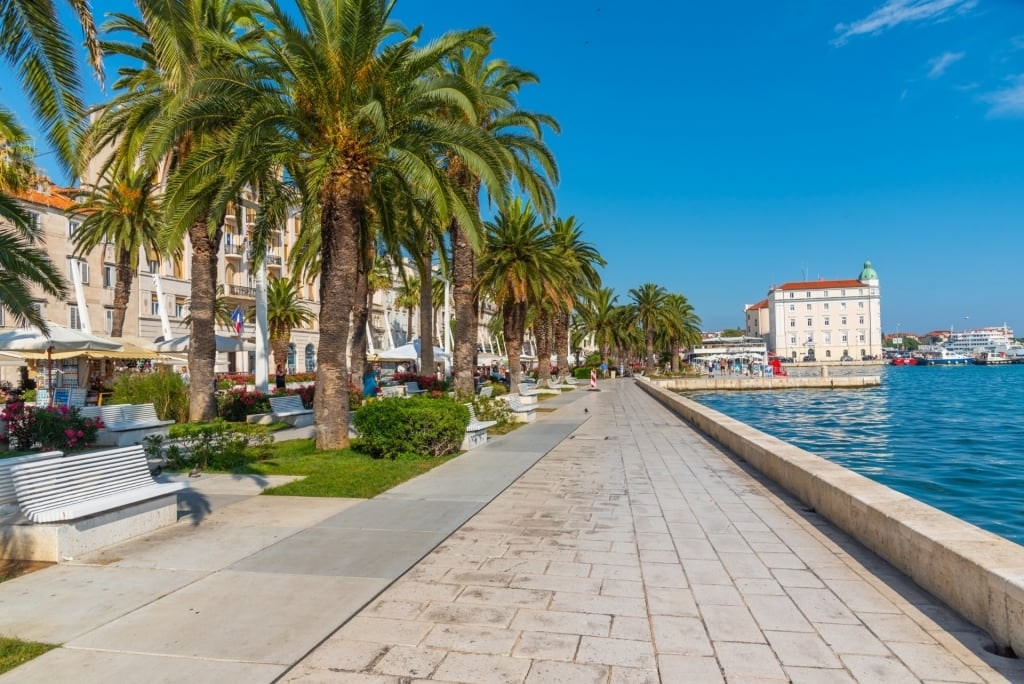
Riva
With a history dating back nearly 2,000 years, Riva, Split’s waterfront promenade, embodies the grandeur and character of the city. This is more than just an important pathway; it has the vibe of a town square by the water.
The current design, with its French-inspired feel, followed later, during the 19th century, when the port was under the rule of a Napoleonic general. Nowadays, the wide, pedestrianized, palm-lined promenade which follows the city’s bay is a haven for people-watching, where locals stroll at sunset and relax on the benches, soaking up the dazzling ocean views and admiring the boats bobbing in the harbor.
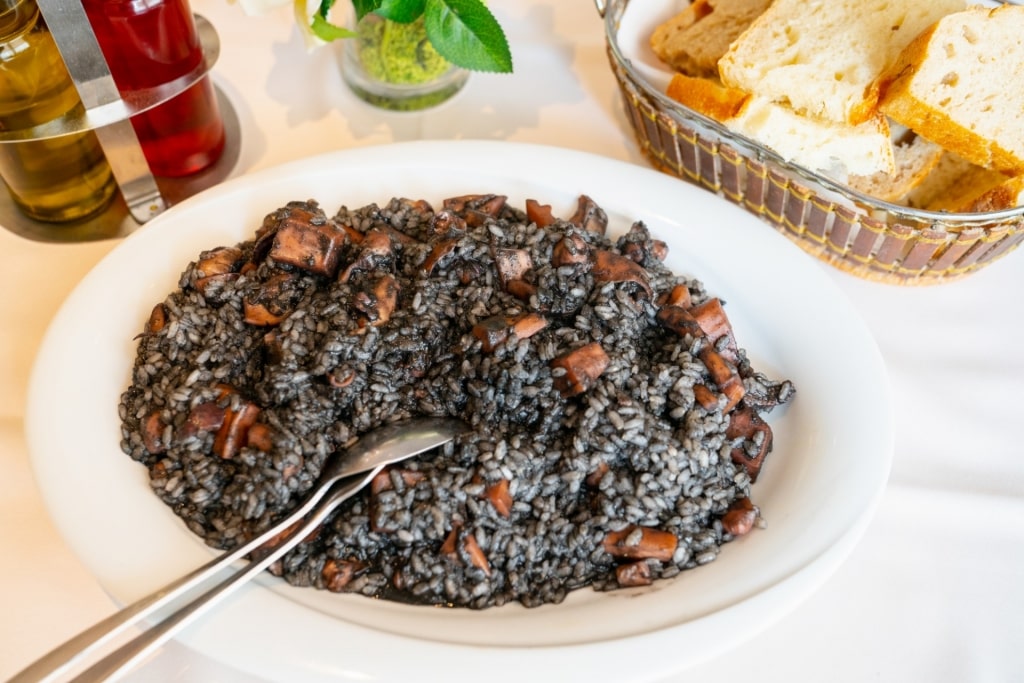
Black risotto
More than just a laid-back location to relax, Riva is the perfect place to take in the city’s atmosphere, thanks to the collection of chic cafés and restaurants lining the promenade.
Settle in under the canopied terraces with a cocktail in hand, sample Croatian dishes such as black risotto (made with squid ink), and enjoy the breathtaking backdrop to the heart of the city’s life.
Lounge on Bacvice Beach
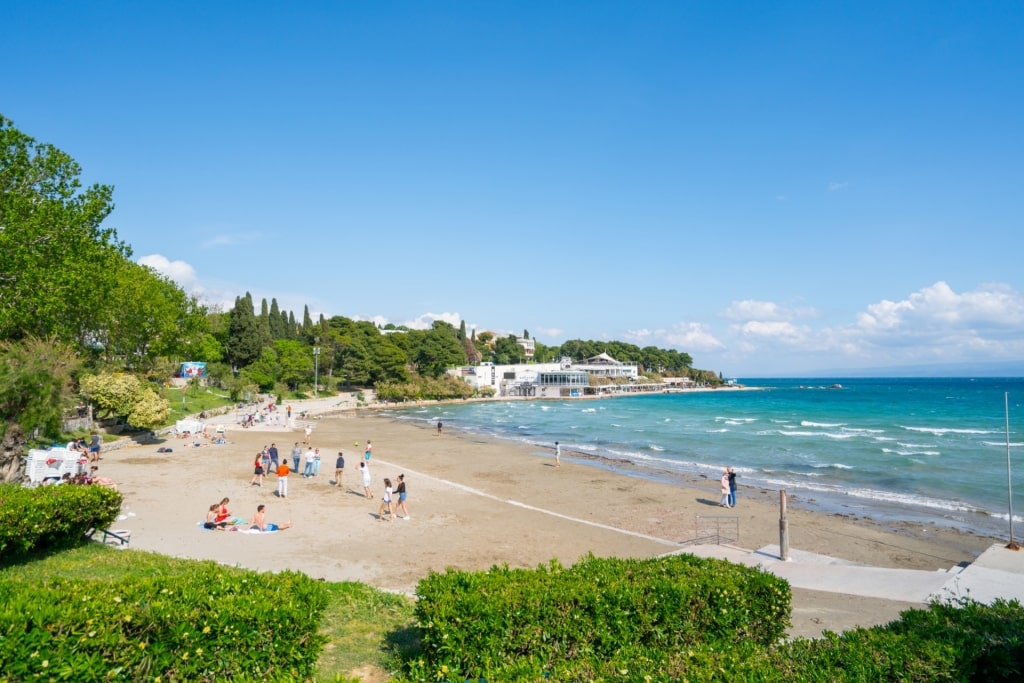
Bacvice Beach
For years, the breathtaking beaches of the Dalmatian Coast have lured sun-seeking visitors to Croatia, and Split is no exception. Relaxing on the sandy beach of Bačvice, one of the closest to the city’s center, is, therefore, one of the most popular things to do here.
With a Blue Flag designation recognizing the water quality, a beachfront café, Žbirac, and some cold water showers and changing facilities, Bačvice is one of Split’s best beaches and the perfect place to slip away to for a refreshing dip between sightseeing.
It’s located just around the headland from where the ferries depart, a ten-minute walk from Diocletian’s Palace.
Take in the Panorama from Klis Fortress
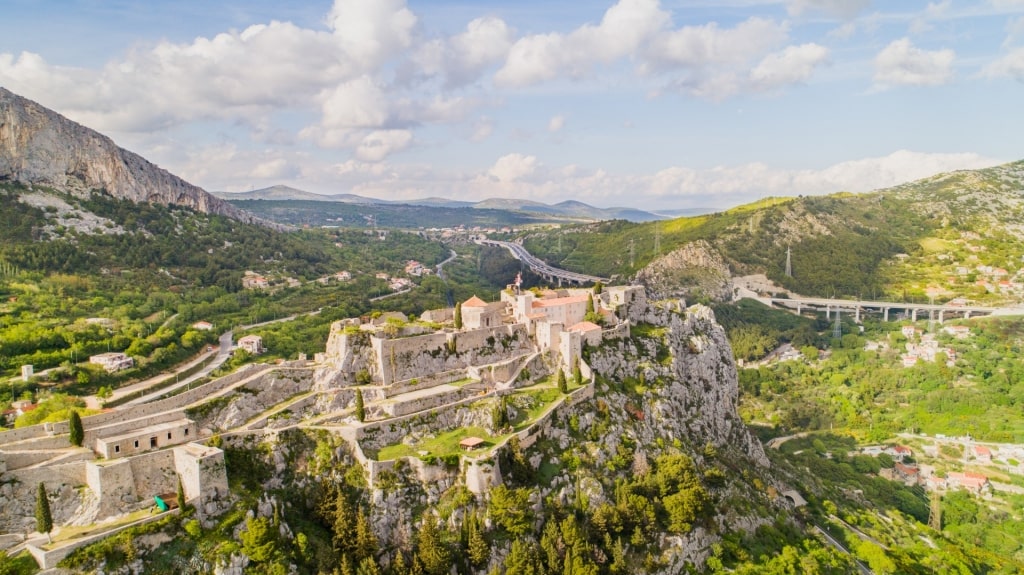
Klis Fortress
Medieval Klis Fortress, a short journey inland from the city, is perched atop a limestone ridge and promises far-reaching panoramas for those who make the short trip.
The fortress dates back more than 2,000 years and control of the structure, and indeed, the surrounding area, has passed through many hands over the centuries. This rich history can be uncovered inside the armory-turned-museum.
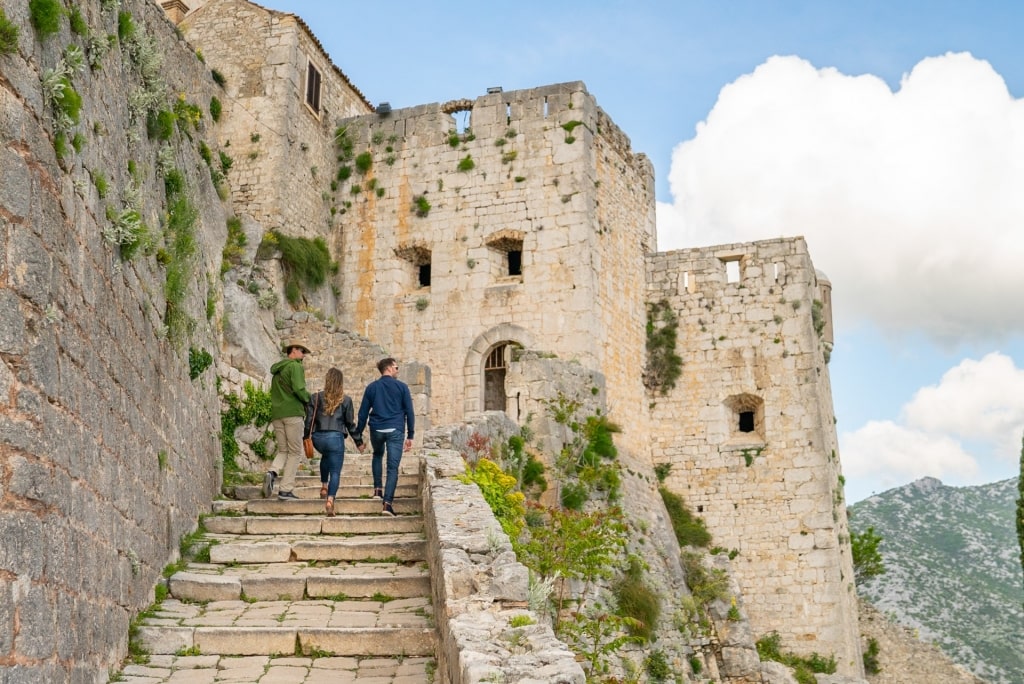
Klis Fortress
Even if you don’t want to take a deep dive into the location’s strategic importance over the centuries, the chance to climb the fortifications and take in the majestic views from the top makes this a fascinating and photogenic side visit away from the center of Split.
Step Back in Time at Split’s Archaeological Museum
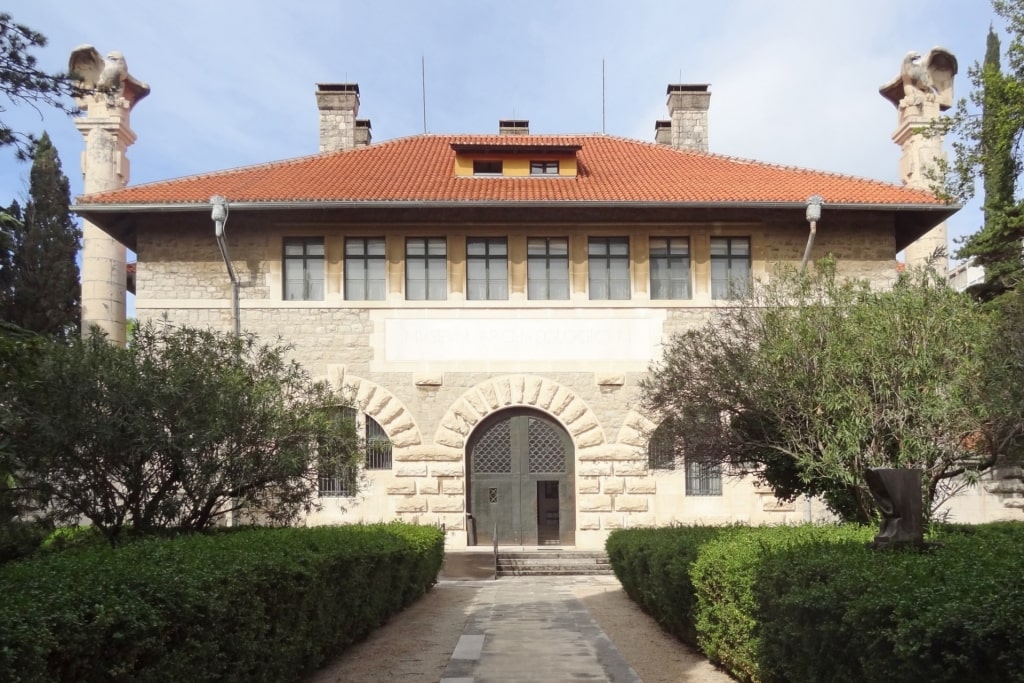
Archaeological Museum Photo by Bernard Gagnon on Wikimedia Commons, licensed under CC BY-SA 2.0
A short stroll north from the historic center will bring you to Split’s Archaeological Museum, housing discoveries from Split and the nearby Roman city of Salona, or Solin, as well as Greek artifacts from the nearby island of Vis.
Magnificent mosaics, classic sculptures, ancient pottery, and other relics, such as aged coins, adorn the curated cabinets and cloister displays, which form Croatia’s oldest dedicated museum.
Slip Away to Ancient Salona
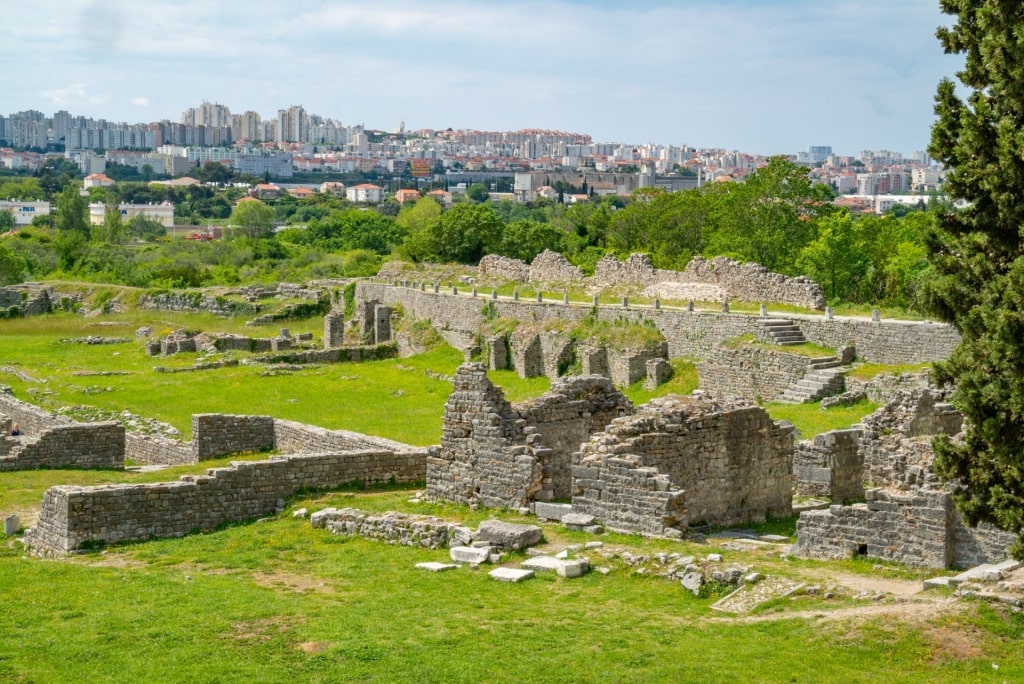
Salona
If you’d prefer to see Salona with your own eyes rather than through the museum’s exhibitions, it’s easily visited on a side trip, the suburb being just 10 minutes from the city.
Once the ancient Roman capital of Dalmatia, Salona’s history is extensive, with many archeological ruins still visible today. Of particular interest is the grand amphitheater, which in its heyday would have hosted around 20,000 spectators.
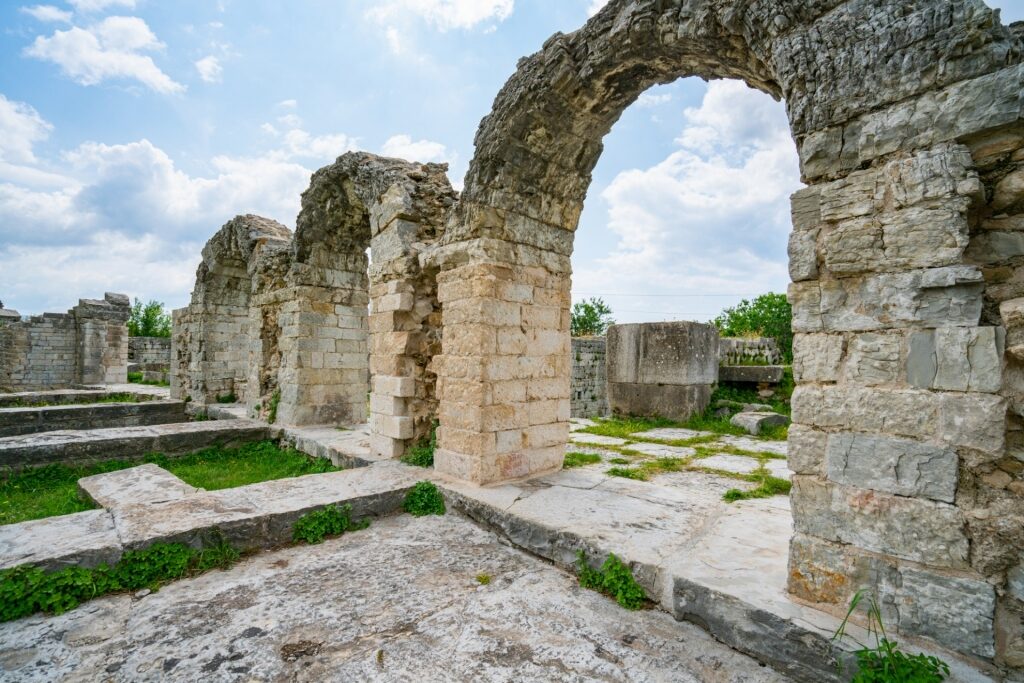
Salona
While just the base and some stones remain (as the Venetians destroyed it during their stint controlling Split), travelers with a keen interest in Roman history will rejoice at the chance to admire what’s left of this magnificent structure first hand, alongside touring the Manastirine Necropolis.
Take to the Trails of Park Šuma Marjan

Park Šuma Marjan
Split’s forested peninsula, Park Šuma Marjan, rises to the west of the city, hiding incredible viewpoints, shaded trails, and a botanic garden among the greenery.
Popular with ramblers seeking an escape from the busier streets of the Old Town, Šuma Marjan offers a peaceful side of the city, with some excellent vantage points for photography.
Vrh Telegrin, an observation deck around a 30-minute walk from Riva, provides one of the best panoramas. You can see all along the coast, with yachts out on the water and ferries buzzing to and from the nearby islands.

Kasjuni Beach
After taking to the trail, soaking in the waters of the Adriatic will feel like a reward. Luckily, the city’s green park has some beautiful spots to bathe around its perimeter, with Kasjuni Beach being one of the finest.
Admire Sculptures at Mestrovic Gallery
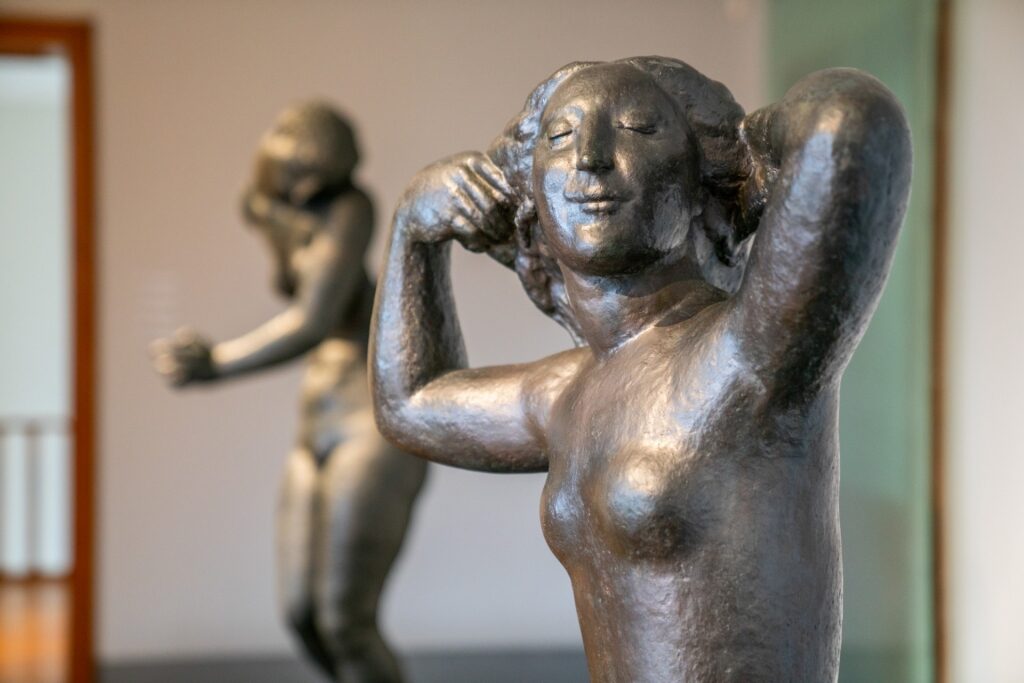
Mestrovic Gallery
Away from the Old Town, at the base of the Šuma Marjan Park, the Mestrovic Gallery celebrates the best works of Ivan Meštrović, a 20th-century Croatian artist.
Meštrović was one of the most acclaimed sculptors and architects in the country’s contemporary history. The building was designed as his own summer villa and is as impressive as his masterpieces crafted in marble and wood.
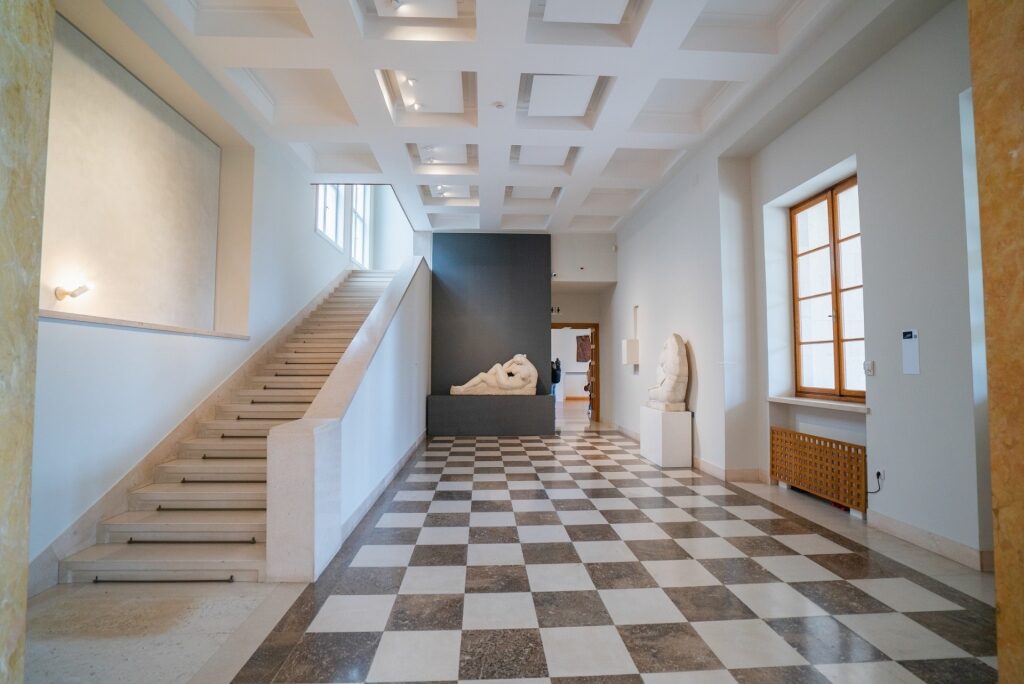
Mestrovic Gallery
Displayed across various rooms and in the lush garden, you’ll find an extensive collection of art deco and classically-inspired works, and although information is limited, the pieces more than speak for themselves.
Taste Croatian Wine
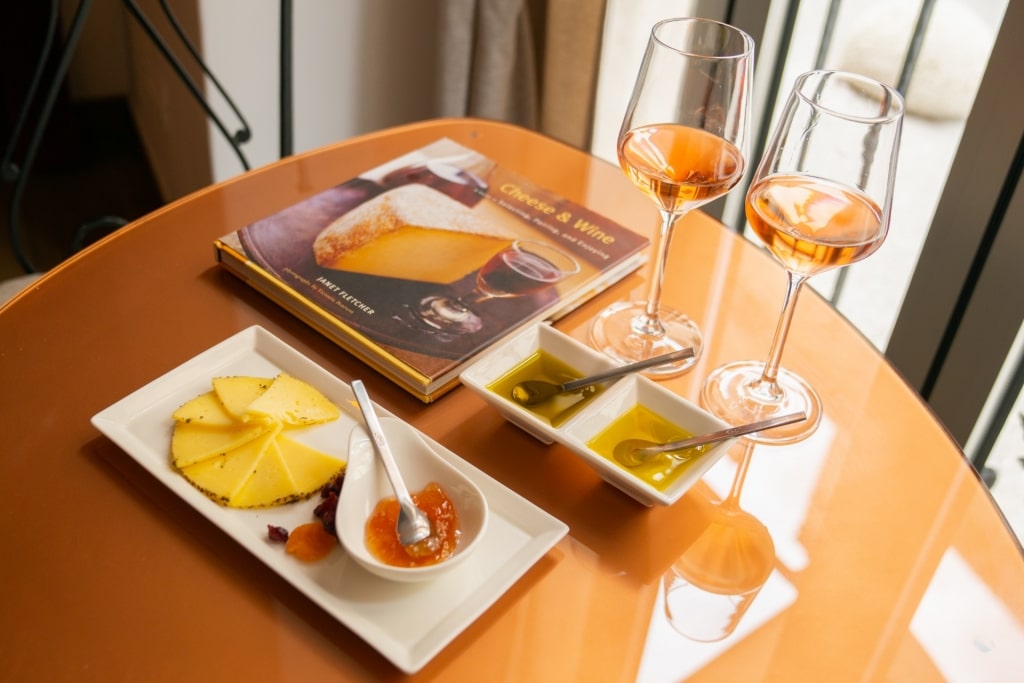
Croatian wine
While Croatia’s vines may not have the international recognition enjoyed by some of Europe’s other ancient wine-producing regions, they certainly have the history—and the quality.
With production in Dalmatia dating back some 2,500 years, sampling a local wine is as much part of the city’s culture as touring its grand palaces.
Within the city’s surroundings, tours and tastings can be enjoyed without having to travel far. Anton Kovač’s Putalj Vineyard, a contemporary space that has only been bottling since 2010, is just a 15-minute drive from the city.
Here, you’ll have the chance to sample straight from the fermentation tanks after touring the growing area, and learn more about the methods used directly from the winemakers.

Croatian wine
Closer still, at Divina Vina, a tiny cellar housed in the basement of a modern central apartment block, Dragičević offers visits to his small-batch production space, where local grapes, such as Babić and Trnjak, dominate.
If you’d rather just sip the good stuff while enjoying the sea views, though, the bars along Riva stock plenty of excellent, locally produced wines to sample at your own pace.
Tour UNESCO-Listed Trogir
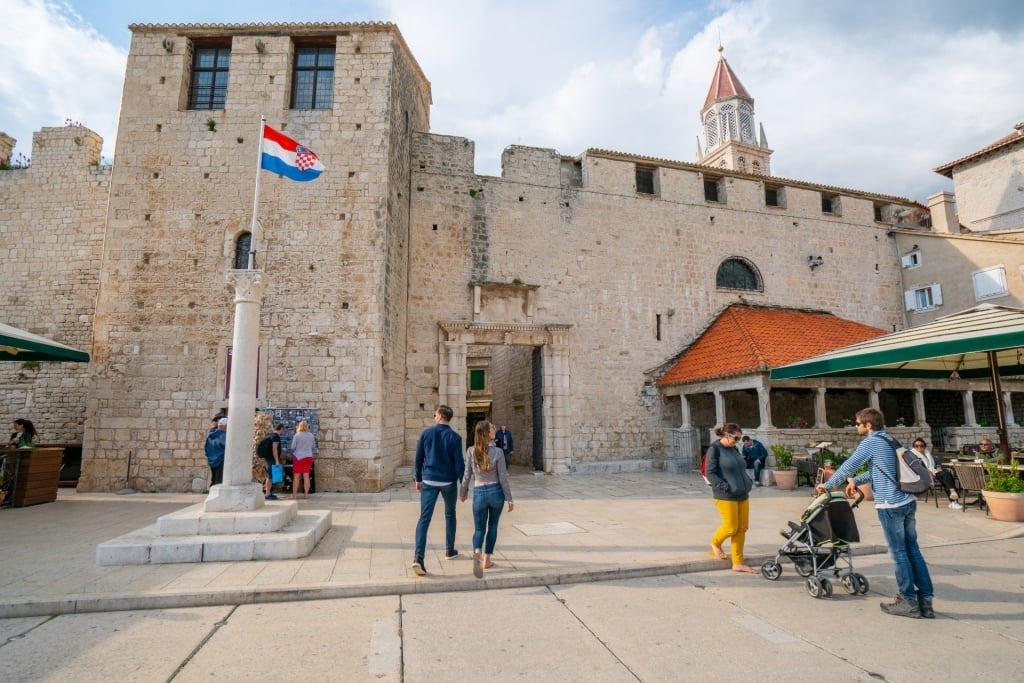
Trogir
Around 30 minutes further along the coast from Split, the UNESCO World Heritage-listed Trogir is one of the region’s most beautiful harbor towns to visit.
Postcard-worthy thanks to its medieval walls and island position, linked by bridges to the mainland and to the island of Otok Ciovo, Trogir’s Old Town is a well-preserved blend of renaissance and romanesque architecture.
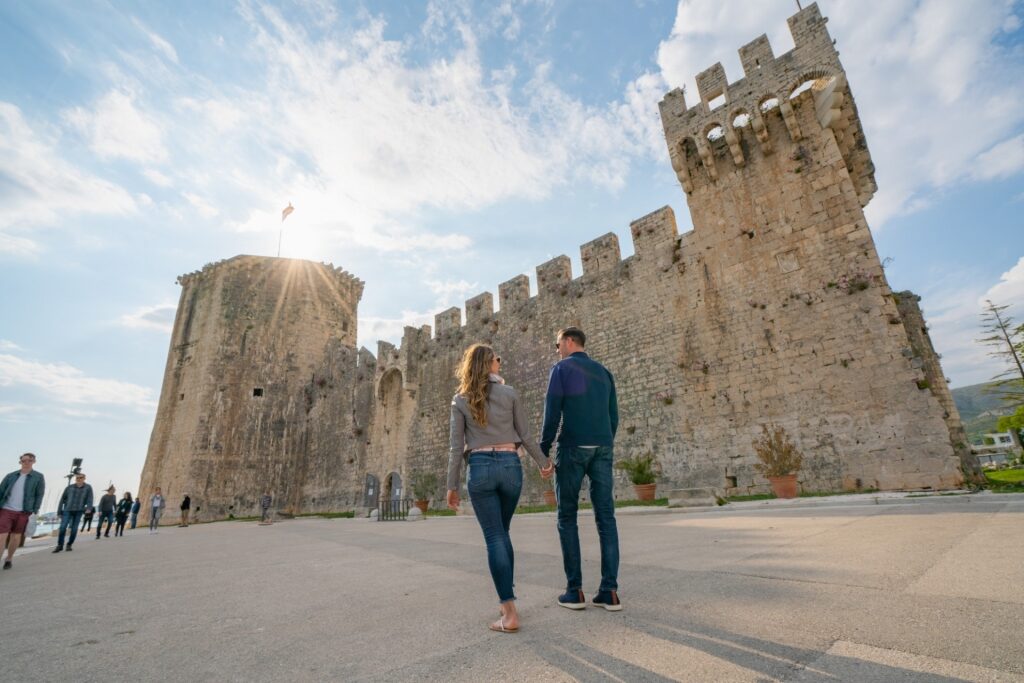
Kamerlengo Castle, Trogir
As you stroll through the web of streets and loggias, sights such as the impressive 15th-century Kamerlengo Castle and St. Lawrence’s Cathedral add to the ancient grandeur of this delightful town.
Ready to discover all the best things to do in Split and the sun-kissed coastline of this historic city? Explore Celebrity’s cruises to Split and plan your next dream Adriatic vacation.
